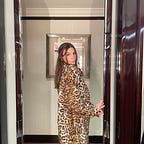Seville Chic: A Stylish Journey Through Southern Spain’s Fashion and History
Welcome back to my blog, and welcome to a captivating exploration of Seville’s evolution of fashion and style. Join me as we go along a journey to discover the unique aspects that influence the fashion we currently see in Seville, Spain.
Seville is situated on the lower part of the River Guadalquivir, and it is in the central part of Andalusia. Now that you understand where Seville is located, let’s dive into the Moorish legacy which has an impact on the fashion seen in Seville. The reason for these influences dates back to the history of Islamic rule. Clothing seen in Seville is vibrant, full of patterns, and flowing fabrics which all link back to Islamic traditions.
Flamenco Influence
A huge influence in Seville comes from the history of Flamenco dancing. Flamenco is a passionate and expressive form of dance which is very popular in Seville. Flamenco fashion has different elements that include bold colors, ruffles, and embellishments. These embellishments can be hand-painted by designers. Mantones is a garment that is widely used for special events, especially flamenco. These dresses are part of tradition and even when I visited Seville, I saw so many different flamenco performances. It was fascinating to see how fashion is so integrated with the actual dance.
Baroque Period
The next big influence of fashion in Seville is the Baroque period. The Baroque period lasted from the late 16th century to the 18th century when Spain experienced an artistic revolution that extended to the fashion in Seville. Clothing became a symbol of power and wealth, and people would make sure to show off the nicest fabrics (silk, velvet, brocade.) Baroque fashion had an emphasis on paying attention to details. Details include embroidery, lace, pearls, sequins, and metallic threads on the clothing worn during this time. Voluminous shapes for women’s dresses were also used during this time to exaggerate a simple and polished look. As mentioned before, colors were super important. All colors were bright and had deep jewel tones and bolder contrasts. Gold and silver were used during the Baroque period.
Celebrations
As I touched upon Flamenco, religious celebrations have an impact on the type of clothing that citizens of Seville wear. Traditional attires during these religious celebrations are huge, and an example of this is Feria de Abril, which is a very iconic celebration. During this celebration, participants wear lively and vibrant colors with ruffles and floral patterns. The dresses have a specific name, called “Trajes de Flamenca.” Trajes de Flamenca is a symbol of regional identity and adds festivity to the celebration.
Day-to-day Fashion
As time moved on, the climate impacted the typical day-to-day fashion. I saw several of these trends throughout my trip to Seville. Lightweight clothing with fabrics like linen and cotton is important to keep yourself cool during high temperatures. The use of bright colors remains, and the same with the floral and geometric prints. Casual chic is the modern-day fashion style seen in Seville. It is a mix of traditional, causal, and elegant styles.
Concluding Seville’s Fashion and Culture
Overall, the history of fashion in Seville is directly linked to the history and traditions seen within Southern Spain. Next week, we will look at the fashion and history in Amsterdam Netherlands.
Comment down below what other countries you would like to see and share your thoughts about this article! Don’t forget to like and subscribe for more! We have a great trip coming up to the Netherlands, so hang tight.
Check out these articles for more:
